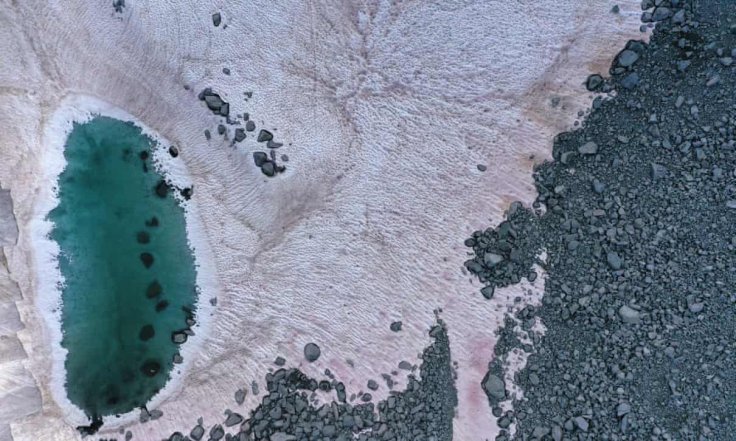Pink ice has appeared in the alps glaciers, and Italian scientists are investigating how to solve the mystery. Experts say that it is caused by the algae that accelerate the effects of climate change.
However, the debate is still on about where the algae came from. Italy's National Research Council's Biagio Di Mauro said that the pink snow seen in the Presena glacier might be caused by the plant found in Greenland.

It is not dangerous, he said, adding that it was a natural phenomenon that happens during the spring and summer in mid-latitudes and also at the Poles. Di Mauro had previously studied the algae in Switzerland's Morteratsch glacier.
The plant he mentioned is scientifically known as Ancylonema nordenskioeldii, present in Greenland's Dark Zone.
Environmental Impact
Usually, ice reflects over 80 percent of sun's radiation back to the atmosphere. Now, the algae darken the ice to an extent that it absorbs heat and makes it melt with ease.
This means that the more the algae, faster is the melting of ice. The water from the ice aids the algae's growth, while it adds red hues to the white ice as it is seen at the Passo Gavia at an altitude of 8,590 feet.
Di Mauro says that anything that darkens the snow leads to its melting, as it accelerates the absorption of radiation. Experts are trying to quantify the impact of phenomena other than human-made ones that aid in the overheating of Earth.
Overheating of the Planet
Some Tourists at the glacier, speaking to AFP, lamented the impact of climate change, as reported by France 24. "Overheating of the planet is a problem, the last thing we needed was algae," tourist Marta Durante said, adding that there was irreversible damage being done to the environment. "We are already at the point of no return, I think."
Another tourist, Elisa Pongini from Florence, said that Earth was giving back what humans did to the planet. "2020 is a special year: terrible things have happened," she said.









